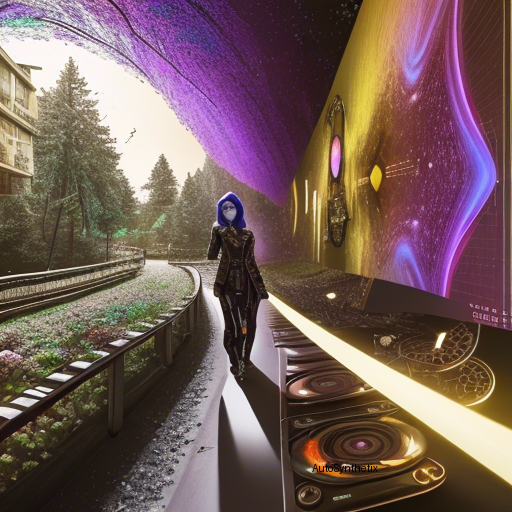In today's digital landscape rife with misinformation, the potential threats posed by artificially synthesized media have never been more pressing. In a groundbreaking development, researchers present a novel solution called 'AI-Generated Video Detection via Spatrio-Temporal Anomaly Learning,' paving the way towards detecting these deceptive creations before they wreak havoc upon public discourse. Let us delve into their innovative approach unraveling the intricate layers behind synthetic realities.
**The Perilous Paradox of Realism vs Authenticity**
As deep learning advances exponentially, we witness astoundingly realistic AI-synthesized imagery and videography. While undeniably impressive, malevolent actors may exploit this technology, fabricating events or personalities outright, propagating disinformation through falsified moving visual narratives. Consequently, there arises a dire need to identify and counteract this menace proactively—enter the proposed AI-Generated Video Detection framework.
**Enter the AIGVDet – Sifting Through Spatiotemporal Deceits**
This cutting-edge methodology revolves around capturing imperceptible yet telltale signs left within AI-manipulated clips using a sophisticated two-branched spacio-temporal CNN architecture. Dubbed the "spatio-temporal anomaly learning," this system exhibits exceptional vigor in unearthing inconsistencies lurking beneath seemingly authentic surfaces.
Within its dual-faceted design, two distinct ResNet sub-detections emerge, meticulously trained to scrutinize spatial distortions alongside temporal aberrancies inherent in manipulated footage. By analyzing both static image elements and dynamic motion patterns separately, the fusion process fortifies overall performance, amplifying discriminating capabilities.
**Constructing Ground Zero – Gathering Synthetic Data En Masse**
To ensure comprehensive testing and validation, a colossal synthetic video database, christened GVD ("Generative Video Dataset"), serves as a reliable foundation for evaluating the efficacy of the AIGVDet mechanism. Comprising extensive samples from various generators, this corpus provides a solid backbone for rigorous experimentation and fine-turning the algorithm.
**Experimentation & Verification – Proof in Performance**
Extensively tested under diverse conditions, the experimental outcomes exhibit remarkable competence, underscored by high levels of generalizability and resiliency against adversaries seeking to evade detection. As evidence mounts affirmatively, confidence grows that the AIGVDet proposal stands tall amidst the escalating challenges instigated by nefarious applications of advanced AI technologies in multimedia production.
Conclusively, the team's pioneering work lays down a sturdy cornerstone toward safeguarding the integrity of audiovisual data consumed globally. With code and datasets readily accessible at GitHub, academics and industry experts now possess a potent toolkit for combatting the insidious threat looming over our collective perceptions shaped by ever-advancing computer vision engineering.
Keywords: AI-generated Videos, Deep Fakes, Misinformation, Forensic Traces, Temporospatial Analysis, Neural Networks
Source arXiv: http://arxiv.org/abs/2403.16638v1
